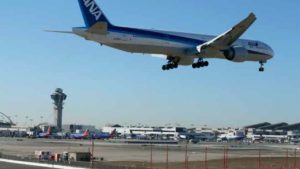Editor’s Note: An excellent article by Spirent’s Guy Buesnel. Guy is slated to speak at the US PNT Advisory Board meeting in Baltimore next week about “GNSS Threats, Attacks, and Simulations.” We strongly encourage anyone who is able to attend. If you can’t attend, after the meeting his presentation will be posted on the Advisory Board website.
GPS disruption and Critical National Infrastructure
by Guy Buesnel, PNT Security Technologist- Robust Position, Navigation and Timing, Spirent Communications
Evidence of growing GPS jamming threats near Airports shows the need for increased vigilance.
In 2013 pilots reported 11 incidents of GPS interference or malfunction through NASA’s Aviation Safety Reporting System (ASRS); in 2014 the number jumped to 24; in 2015, it was 28, and 28 incidents were also reported in 2016.
That amounts to 91 occurrences of GPS disruption in aviation in four years – each sufficiently serious to justify professional pilots reporting them to a voluntary, anonymous database. In the majority of these incidents a GPS-based navigation system either experienced a total loss of signal or – more seriously – misreported the aircraft’s position. What’s more, these reports only represent the incidents that flight crew have reported to the ASRS database, so the actual number is undoubtedly higher.
Unknown causes
In many of these cases there is no immediate explanation provided for the malfunction. Many reports simply say the signal was lost for a time and then returned – with flight crew either falling back on other navigation techniques or asking air traffic control for guidance. For example, a Cessna pilot reporting an unexplained incident in 2014 wrote:
“While established on the localizer for the approach to Runway 22L in Boston, the GPS signal was lost numerous times (more than 3) from 20 miles out from the runway to 5 miles out. Each time the GPS failure message remained for approximately 10-15 seconds before signal returned. The weather was VFR and navigation was not affected.”


